The Story of Henno Martin and Hermann Korn
Sunday, 10th June 2018
The story of two German Geologists, Henno Martin and Hermann Korn hiding in the Namib Desert for two and a half years during WWII, is well known amongst Namibians but lesser known amongst visitors. They might be perplexed by encountering this sign at the Kuiseb Canyon viewpoint.
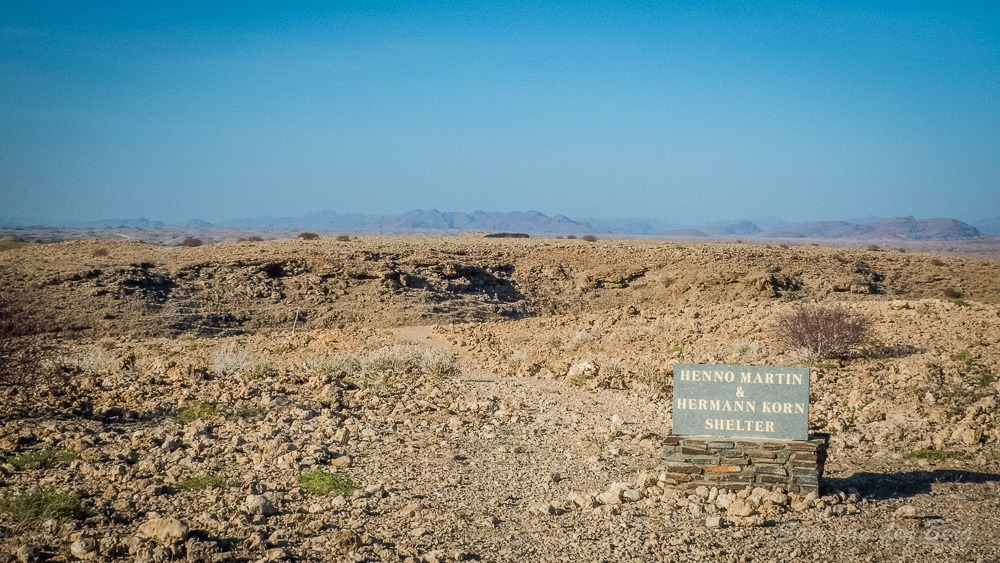
Below is the story of these remarkable men in brief, following the timeline as presented by Robert Raderschatt on his website http://www.namutoni.de.
Recommended Reading
Apart from Henno Martin’s book “The Sheltering Desert” the book by Deon Silva The Ultimate Guide to Henno Martin's "The Sheltering Desert" is recommended reading for anyone that want to retrace the footsteps of Henno Martin and Hermann Korn.
The Ultimate Guide to Henno Martin's "The Sheltering Desert" is obtainable from Amazon.com. https://www.amazon.com/Namibias-Sheltering-Desert-Ultimate-Martins-ebook/dp/B012OP0GCU.
The Sheltering Desert is now in the public domain and can only be bought second hand (if you are lucky) A full pdf copy is available here.
A Brief Timeline
Henno Martin was born in 1910 in Freiburg, an ancient university and former silver-mining town at the edge the Black Forest—the rift shoulder east of the Rhine graben—in the socially progressive southwest corner of Germany. He raced through school, majoring in natural science and geo-science at the universities of Zürich and Göttingen, before completing his PhD at age 25 at the University of Bonn. His thesis adviser was Hans Cloos, himself a Freiburg graduate. (Hoffman Paul F.; 2013)
Henno Martin’s closest friend in Bonn was Hermann Korn, another Cloos student three years older than Henno. Hermann was born on 24 October 1907, Seggerde, Germany. Hermann collected minerals as a child and became the youngest ever member of the Saalfeld Geological Society at age 10. He suffered episodes of depression all his life, accompanied by heavy drinking, but when he was right he was brilliant. It is easy to see how Hermann, brilliant but unsteady, was drawn to Henno Martin, quietly resolute and self-disciplined. There were plenty of distractions. Hermann was less politically engaged than Henno, but both were deeply troubled by the turn in German politics. (Hoffman Paul F.; 2013)
For Henno Martin and Hermann Korn, the rising tide of nationalism, authoritarianism, militarism, paternalism and minority scapegoating in Germany, convinced them to seek work abroad. The idea to go to South West Africa was presumably inspired by Cloos, who had worked there himself as a 25-year-old tin-granite exploration geologist in 1910. (Hoffman, Paul F; 2013)
In August, 1935, Drs Korn and Martin (Fig. 3) boarded the steamer Usambara of the Woermann Line bound for South West Africa, since 1919 a British mandate administered by South Africa. (Hoffman Paul F.; 2013)
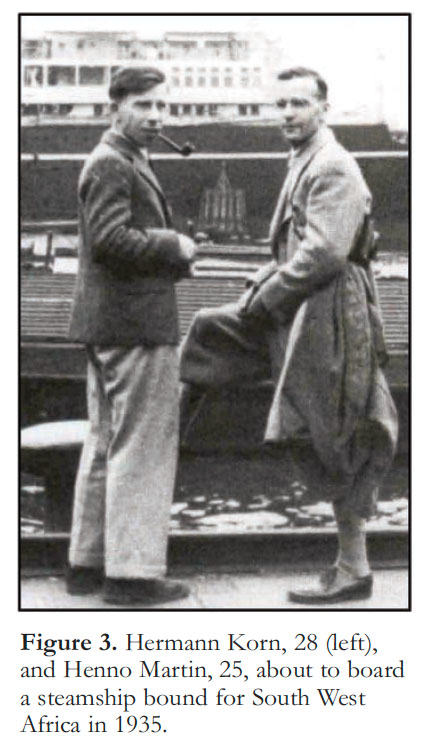
During the cruise along the west coast of Africa, they visited several West African countries. (Canary Islands, Guinea, Sierra Leone, Ghana, Nigeria)
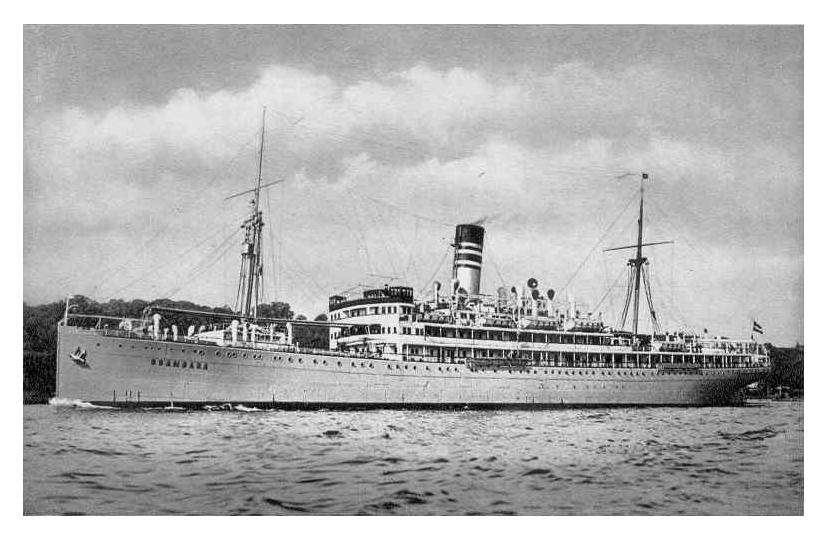
On September 8, 1935 they arrive at Walvis Bay. Contrary to the advice of having their cars transported by train to Swakopmund, they take the difficult desert road to Swakopmund. They got stuck in the sand again and again. (Raderschatt, R. : 2017)
They arrive exhausted in Swakopmund on September 13, 1935 where they spent some time to acclimatise. In Swakop they make many acquaintances and visited the seal colony at Cape Cross.
They continue to Windhoek, where the truck and trailer were adapted to desert conditions.
October / November 1935 - Their geological research began in the Naukluft Mountains, an area of about 70 x 35km.
They initially stayed in tents in the 'police gorge' (today Quivertree Canyon/Kokerboomskloof) near Büllsport, on the Naukluft-North eastern Border. The tent stood next to the ruins of the old police station dating back to the colonial era. (Raderschatt, R. : 2017)
On the basis of their research, Henno Martin and Hermann Korn were able to refute the distinguished Breslau geographer Prof. Erich Obst, who had considered the coming dehydration of South-West Africa very likely. This dispute culminated in a political issue, as a result of which the two young geologists could not safely return to Germany. (Raderschatt, R. : 2017)
When their research funding came to an end, the two had to find employment which was not a problem as geologists were in demand to find water resources. By 1937, 36% of the country had been allocated to commercial farmers and it was this surge in private land allocations that enabled Martin and Korn to support themselves as consultants in the siting of water wells, something they were well trained for. The work left them with ample time for their primary objective, the geology of the rocky escarpment. Mapping together, alone in the desert, was the best of times. Henno later recalled that Hermann was mentally healthiest in the desert because there was always something that needed doing. (Hoffman Paul F.; 2013)
During September 1938 the world is convinced of an imminent war. At that time, Henno Martin and Hermann planned to go the game-rich desert canyon of the Kuiseb Rivier rather than internment. (Raderschatt, R. : 2017)
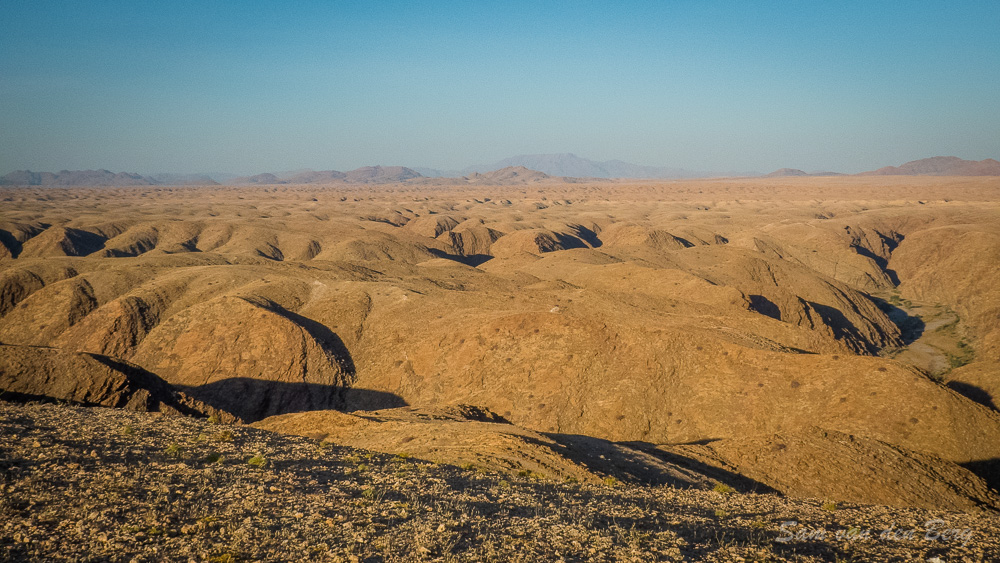
On Friday September 1, 1939, they heard on the radio that Nazi Germany had invaded Poland. By midday Sunday, the United Kingdom and France had declared war on Germany. The United States declared its neutrality on Tuesday, but earlier in the day when South African Prime Minister Barry Herzog failed to gain support for neutrality in his caucus, he was replaced by Deputy Prime Minister Jan Smuts, who declared war on Germany the following day. (Hoffman Paul F.; 2013) World War II had begun.
In the middle of the month, the internment of Germans living in South West Africa begins, in particular the Nazi-active persons. Thus, the two geologists remained free for the time being, but had to hand in their hunting weapons. They could carry on with their work subject to certain conditions.
By the end of 1939, 77 people were interned, which increased to 96 by March 1940.
April / May 1940 The British is defeated in Norway and Germany attacks Holland and Belgium. With the beginning of the western campaign, the South African Government is changing its restrained internment policy. More and more Germans are interned, first in the building of the old German radio station (Klein-Danzig) in Windhoek, then in the newly built internment camp called Andalusia (now Jan Kempdorp) near Kimberley in South Africa. By the end of the war, a total of about 1,600 men will be interned. (Raderschatt, R. : 2017)
Hermann Korn wants to flee but Henno Martin hesitates. Finally on May 25 1940, after four days of packing, they left scraps of paper in the trash with tallies of gasolene needed for a trip to Brandberg. With Hermann Korn's dog Otto, a pickup truck and a Chevrolet passenger coupe and without hunting weapons, only with a pistol and a shotgun they drove halfway to the Brandberg, before turning off into the hills at dusk. After dark, they slipped off to the southwest on a little-used track heading into the hyper-arid Namib.
Driving only at night, for fear of being seen in the open desert from the air, they crossed the Swakop River - loose sand at this time of year - and circled back toward the southeast until they reached a maze of schist-rock canyons in the upper Kuiseb River catchment (Fig. 6). There, they hid their vehicles and for the next two years plus 100 days, they lived in total isolation, connected to civilization only through a short-wave receiver.
Their first shelter was Carp Cliff. The existence of carp in the water holes in the Kuiseb was no surprise (Contrary to the book). This was known to them since a Kuiseb excursion in August 1938. (Raderschatt, R. : 2017)
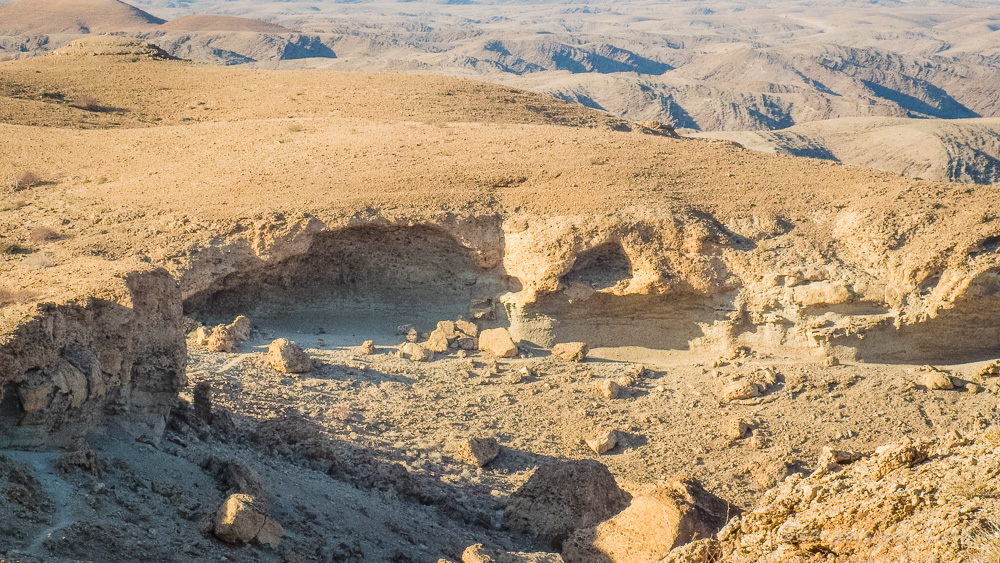
Their cars were hidden in a gorge 5km north of the shelter. They removed the battery and carried it back to power their radio enabling them to follow the course of the war and listen to symphony concerts over Radio Cape Town.
The battery was charged with a wind generator. The search for water, game and salt led the two to explore the area including the Goagos and Rostock mountains. (Raderschatt, R. : 2017)
They melted the small lead pellets of the shotgun ammunition into larger balls so that gemsbok (oryx) and zebras could be killed at longer distances. (Raderschatt, R. : 2017)
They only had what they could bring with them. Supplies were limited and basic (flour, sugar, tobacco, etc.). But they were not alone in the desert and they could learn to catch and trap what they ate. Accordingly their days were spent in the neverending circle of survival namely finding food and water.
When their hunts were successful they produced smoked meat, sausage, biltong (sliced dry meat) and meat extract. (Raderschatt, R. : 2017)
They also carried on with mapping the environment and their geological research.
Against the background of the ongoing war, Henno Martin and Hermann Korn discussed the meaning and purpose of human existence. They also captured their everyday lives in photographs and Hermann Korn painted several landscapes in water colors and played the violin. (Raderschatt, R. : 2017)
During September 1940 they made their first contact with civilisation. They visited Werner Siedentopf the owner of the Niedersachsen-Farm. They stayed 3-4 days and felt like they were in the "land of plenty". (Raderschatt, R. : 2017)
There were a few emergency visits to the Siedentopfs, such as the emergency care of Otto after he was “spiked” by an Oryx.
October 1940 - The Beginning of summer and hot weather. The water in the pools began to sink. Although the first rain clouds have been in sight for six months, there is no rain at the Carp Cliff.
During November 1940 they dicovered the Nausgomab Rivier during a 3-day hike along the Goagos Mountains.
Christmas time 1940 The first rain for nine months but at the end of January 1941 the water situation at Carp Cliff was so bad that the game moved away!
Henno and Hermann also decided to move to their 2nd hiding place at Nausgomab on the edge of the Niedersachsen farm. They build a house from flagstones prevalent in the area.
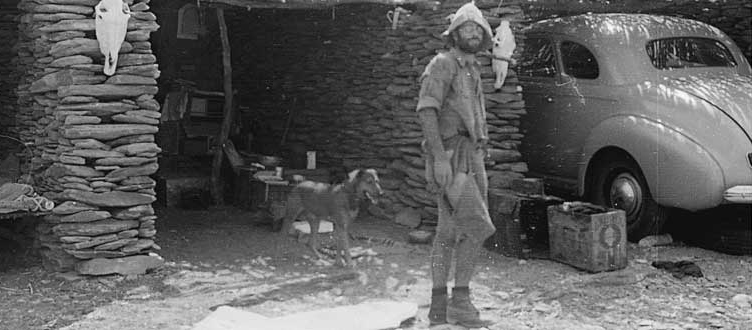
It was here, during June 1941 when the German invasion of Russia started Hermann said “He seems to have forgotten Napoleon”. (Hoffman Paul F.; 2013)
The hunting was good from a hidden vantage point at the Bitterquelle but they decided to move the hunting away from the spring so as not to frighten the animals away.
The water in the pools used by the Geologists sank and they had to cover a larger sandy area to get to the water. They were worried about their footprints in the sand and made rubber soles that resemble the spoor of Oryx and Zebras to prevent detection. (Martin, H. : 1983)
With water becoming scarcer they decided to build a water tank of flagstone slabs and tried various methods to seal the joints. After two weeks the tank was ready. It took them 3 days to get it half full and they were proud of their achievement. (Martin, H. : 1983)
October 1941 Only eight days after completing the water tank Hermann spotted a police patrol at the Nausgomab and they decided to move to the third and final hiding place (today's Kraaipoort farm area). The water tank must be left behind at the Nausgomab. The remains of it can still be seen there today. (Raderschatt, R. : 2017)
Because of the contamination of the waterhole by baboons, they called the third dwelling the Baboon’s Hole. Although the Carp Cliff and the Nausgomab hiding places take up most of Henno Martin's book, they spend the longest time of their escape at the Baboons Hole. (about 11 months).
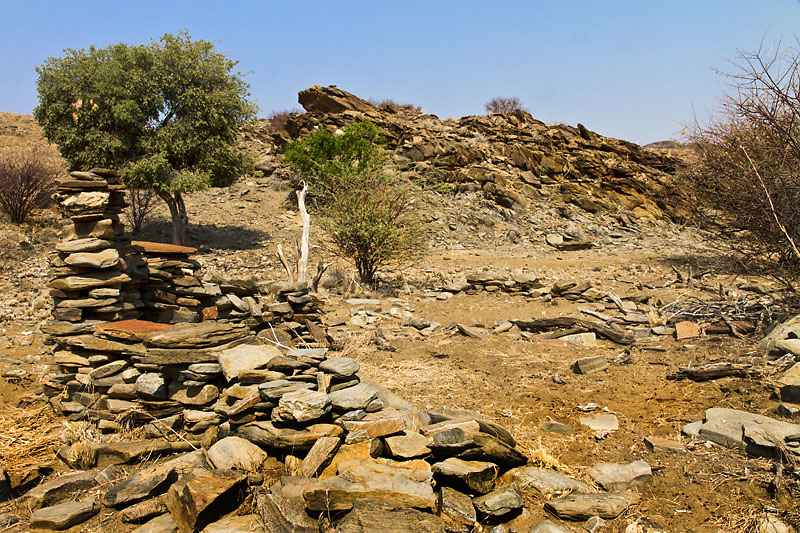
October 24, 1941 It was Hermann Korn’s 34th birthday and housewarming "Hauseinweihung" at the Baboon’s Hole. The mood was sombre though as their food supplies were running low. No coffee and Hermann’s tobacco was finished. The game moved after rain fell eighty to ninety kilometers away.
New Year 1942 - With the lack of supplies becoming critical Hermann Korn undertakes a daring drive to Windhoek to procure supplies. Because of the holidays, Windhoek is almost deserted and he returned with much the needed supplies and luxuries such as figs and bacon to the delight of Henno and Otto. (Martin, H. : 1983)
Mid-February 1942 the rain came, 100mm in half an hour. The house in the Rivier is covered by the masses of water. The two saved themselves and their belongings with great difficulty by moving to a 40m higher location on the mountain slope. There they erected an emergency home in a long, narrow gap, which they later call “wagon-lit” because of the shape. (Raderschatt, R. : 2017)
After the rain they laid out a small garden but the game was scarce as they did not have to come to the pools for water.
During the ensuing months they embarked on a number of multiday excursions into the Namib. Hermann, however, became seriously ill with beriberi.
Finally on the 2nd September 1942 Hermann’s condition forced them to seek medical help. Henno drove him to Windhoek and then returned with Otto to the desert by the original circuitous route. Herman was convinced that Henno would not be able to survive on his own and gave the location to the police.
Henno, was arrested by a well-armed detachment and taken to Windhoek. He spent two days in jail and two weeks in isolation in hospital, before Hermann was well enough for them to face a magistrate, charged with a long list of minor offences.
They were given a small fine, paid by friends, and released. Before the end of the war, they were hired by the government to conduct groundwater exploration. (Hoffman, Paul F. ; 2013).
The professional life separates the two in the following years.
August 9, 1946 at 22:30, southwest of Windhoek Hermann Korn is killed when he drives his car at high speed along railway tracks and the car fell from a railway bridge into the dry Gammams Rivier. Hermann Korn, 38 years old, died instantly. Whether this was the result of oversight, recklessness or suicide remains unanswered.
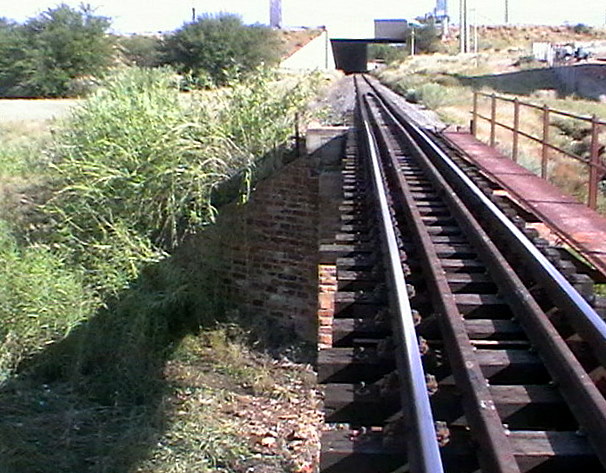
In 1947 Henno was appointed director of the SWA branch of the South African Geological Survey, a position he held until 1963.
In early 1963, Henno became director of the Precambrian Research Unit at the University of Cape Town (South Africa)
After just two years in Cape Town, Henno was offered the prestigious Chair in Geology and Director-ship of the Geological-Paleontological Institute at the University of Göttingen (Germany), a position he held until his retirement in 1975. (Hoffman Paul F.; 2013)
Bibliography
Martin, H., 1983, The Sheltering Desert (English translation by Wiliam Kimber, 1957): AD Donker, Parklands.
Website : http://www.namutoni.de/geologen/ - Accessed on 10/06/2018 - Information compiled by Robert Raderschatt August 2017
Website : https://journals.lib.unb.ca/index.php/GC/rt/printerFriendly/geocanj.2013.40.003/23527 - Accessed on 10/06/2018 - Hoffman, P.F., 2013, The tooth of time: Henno Martin - Geoscience Canada, v. 40, no1.
Accommodation
The Guestfarm BuellsPort - https://buellsport-naukluft.com/
Guest Farm Niedersachsen - http://www.farmniedersachsen.com/index.php/en/














